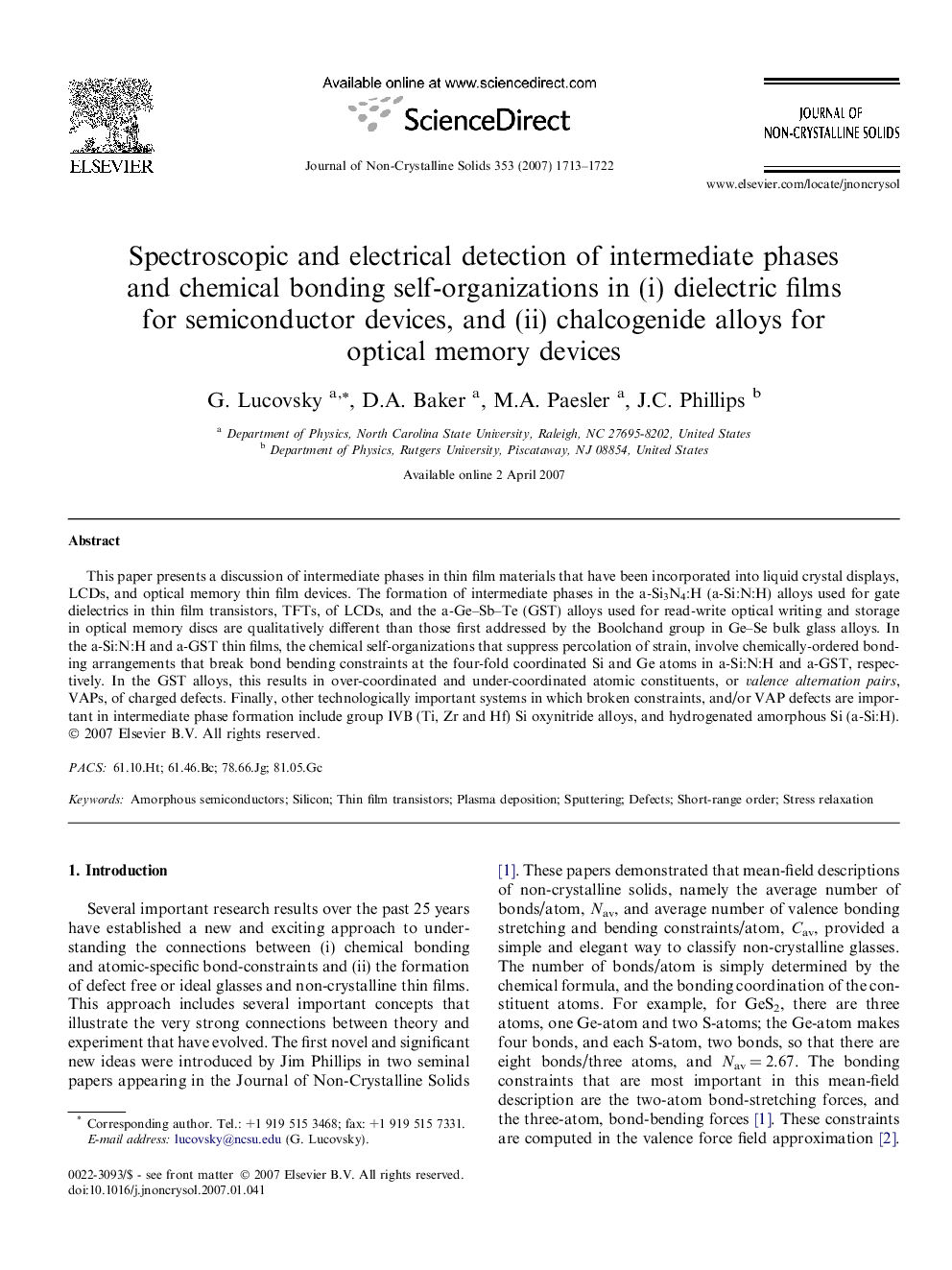| Article ID | Journal | Published Year | Pages | File Type |
|---|---|---|---|---|
| 1485346 | Journal of Non-Crystalline Solids | 2007 | 10 Pages |
This paper presents a discussion of intermediate phases in thin film materials that have been incorporated into liquid crystal displays, LCDs, and optical memory thin film devices. The formation of intermediate phases in the a-Si3N4:H (a-Si:N:H) alloys used for gate dielectrics in thin film transistors, TFTs, of LCDs, and the a-Ge–Sb–Te (GST) alloys used for read-write optical writing and storage in optical memory discs are qualitatively different than those first addressed by the Boolchand group in Ge–Se bulk glass alloys. In the a-Si:N:H and a-GST thin films, the chemical self-organizations that suppress percolation of strain, involve chemically-ordered bonding arrangements that break bond bending constraints at the four-fold coordinated Si and Ge atoms in a-Si:N:H and a-GST, respectively. In the GST alloys, this results in over-coordinated and under-coordinated atomic constituents, or valence alternation pairs, VAPs, of charged defects. Finally, other technologically important systems in which broken constraints, and/or VAP defects are important in intermediate phase formation include group IVB (Ti, Zr and Hf) Si oxynitride alloys, and hydrogenated amorphous Si (a-Si:H).
